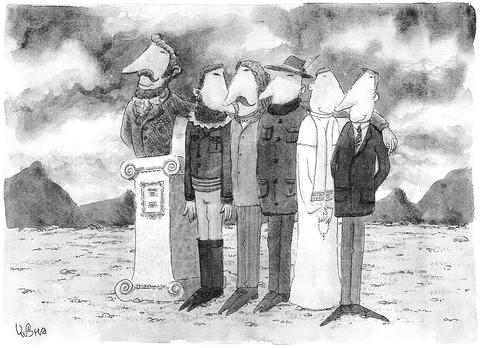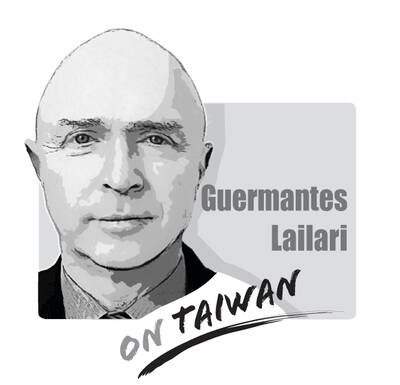Today marks the 100th anniversary of when the first Nobel Prizes were awarded. Ever since, they have been a subject of great interest and debate.
Alfred Nobel died on Dec. 10 1896. When his will was opened it was found that he had donated his considerable wealth to creating the prizes that bear his name. Five prizes were mentioned: physics, chemistry, physiology or medicine, literature and peace; and four prize-awarding institutions named: the Royal Swedish Academy of Sciences (for physics and chemistry), the Karolinska Institutet (for physiology or medicine), the Swedish Academy (for literature) and a group appointed by the Norwegian Parliament, later called "The Norwegian Nobel Committee" (for peace). Sweden and Norway were then tied together in a union.
Since the creation of the Nobel prizes, more than 650 medals and diplomas have been given away in the original prize areas. A prize in economic sciences in memory of Alfred Nobel was established by the Bank of Sweden in 1968. Most of these prizes are connected with scientific breakthroughs, literary masterpieces and attempts to make peace in a violent century.

ILLUSTRATION: YUSHA
The thread running though all the stories of the prize winners is the concept of creativity: both individual creativity and creative environments. One story -- that of a Nobel laureate in physics, Albert Einstein -- is particularly explicative of the process. Perhaps the most common question about the Nobel Prize in physics is: "Why didn't Einstein get the prize for his theory of relativity?"
At the age of 26, during his annus mirabulis of 1905, Einstein published three papers that were to influence the entire 20th century, not only in physics. One of these papers concerned the special theory of relativity, which describes how space and time, or mass and energy, are mixed at high speeds. One paper describes the "Brownian motion," the irregular motion performed by small particles in a liquid as a result of their collisions with the liquid molecules. The third paper, finally, explains the photo-electric effect, why light can make electricity leave metal surfaces, something we apply in ordinary photocells.
Of the three theories, the theory of relativity became the most written about and discussed. When the Royal Swedish Academy of Sciences year after year asked scientists for their nominations, many answered that Einstein deserved the Nobel Prize in physics for his special theory of relativity. But the Nobel Committee for Physics didn't agree, and for years no prize was awarded to Einstein.
At first the Nobel Committee argued that the theory might be wrong and wrote that it would be best to wait for experimental evidence that confirmed Einstein's theory. When Einstein managed to generalize his theory and introduced the curved space-time, in which light bends around heavy astronomical bodies, the number of nominations increased even more.
But the Nobel Committee for Physics had a powerful member, Allvar Gullstrand, professor at Uppsala University and winner of the Nobel Prize in physiology or medicine in 1911 for his work on how light bends in the eye. In his opinion, Einstein was wrong, and he tried to prove it by making his own calculations. Today, we know that Gullstrand was wrong, but his opposition was enough to block the prize-awarding process.
In Uppsala, however, another professor, Carl Wilhelm Oseen, a specialist on mathematical physics, understood Einstein's theories and had also understood the power balance in the Nobel Committee for Physics. As a newly elected member of the academy, in 1921 he was the first to propose giving Einstein a Nobel Prize for his work on the photoelectric effect. This single nomination made the wheels begin to turn in Einstein's favor.
Oseen was made a member of the Nobel Committee and wrote a positive report on the theory of the photoelectric effect. The very next year, Albert Einstein was awarded the 1921 Nobel Prize in physics "for his services to Theoretical Physics, and especially for his discovery of the law of the photoelectric effect."
So was the Royal Academy of Sciences mistaken in not giving its award of a Nobel Prize to Einstein for what most people would consider his most important intellectual discovery? Many have argued that this is the case. But one has to study a little bit more history of physics before making the final judgment.
In this history it is clear that Einstein's paper from 1905 not only explained the photoelectric effect, but also initiated something of a greater magnitude, something revolutionary: it introduced the concept of the photon, the wave-particle which not only lies at the heart of our understanding of both the micro and macro-cosmos, but which led to technical applications such as medical laser scalpels and the laser diodes of the Internet.
With regard to the text of Alfred Nobel's will, which requires that a Nobel laureate confer the greatest benefit on mankind, Einstein's introduction of the photon by far surpasses the theory of relativity.
Today the work of the five Nobel committees goes on, mainly along the same lines as at the beginning of last century. The big difference is the number of nominations, which today tend to run in the several hundreds. If a new Albert Einstein is hidden somewhere among the hundreds of candidates, only the future will tell.
Anders Barany is professor of physics at Stockholm University and senior curator at the Nobel Museum. He has acted as scientific secretary to the Nobel Committee for Physics since 1990.
copyright: project syndicate

Chinese state-owned companies COSCO Shipping Corporation and China Merchants have a 30 percent stake in Kaohsiung Port’s Kao Ming Container Terminal (Terminal No. 6) and COSCO leases Berths 65 and 66. It is extremely dangerous to allow Chinese companies or state-owned companies to operate critical infrastructure. Deterrence theorists are familiar with the concepts of deterrence “by punishment” and “by denial.” Deterrence by punishment threatens an aggressor with prohibitive costs (like retaliation or sanctions) that outweigh the benefits of their action, while deterrence by denial aims to make an attack so difficult that it becomes pointless. Elbridge Colby, currently serving as the Under
The Ministry of the Interior on Thursday last week said it ordered Internet service providers to block access to Chinese social media platform Xiaohongshu (小紅書, also known as RedNote in English) for a year, citing security risks and more than 1,700 alleged fraud cases on the platform since last year. The order took effect immediately, abruptly affecting more than 3 million users in Taiwan, and sparked discussions among politicians, online influencers and the public. The platform is often described as China’s version of Instagram or Pinterest, combining visual social media with e-commerce, and its users are predominantly young urban women,
Most Hong Kongers ignored the elections for its Legislative Council (LegCo) in 2021 and did so once again on Sunday. Unlike in 2021, moderate democrats who pledged their allegiance to Beijing were absent from the ballots this year. The electoral system overhaul is apparent revenge by Beijing for the democracy movement. On Sunday, the Hong Kong “patriots-only” election of the LegCo had a record-low turnout in the five geographical constituencies, with only 1.3 million people casting their ballots on the only seats that most Hong Kongers are eligible to vote for. Blank and invalid votes were up 50 percent from the previous
Japanese Prime Minister Sanae Takaichi lit a fuse the moment she declared that trouble for Taiwan means trouble for Japan. Beijing roared, Tokyo braced and like a plot twist nobody expected that early in the story, US President Donald Trump suddenly picked up the phone to talk to her. For a man who normally prefers to keep Asia guessing, the move itself was striking. What followed was even more intriguing. No one outside the room knows the exact phrasing, the tone or the diplomatic eyebrow raises exchanged, but the broad takeaway circulating among people familiar with the call was this: Trump did